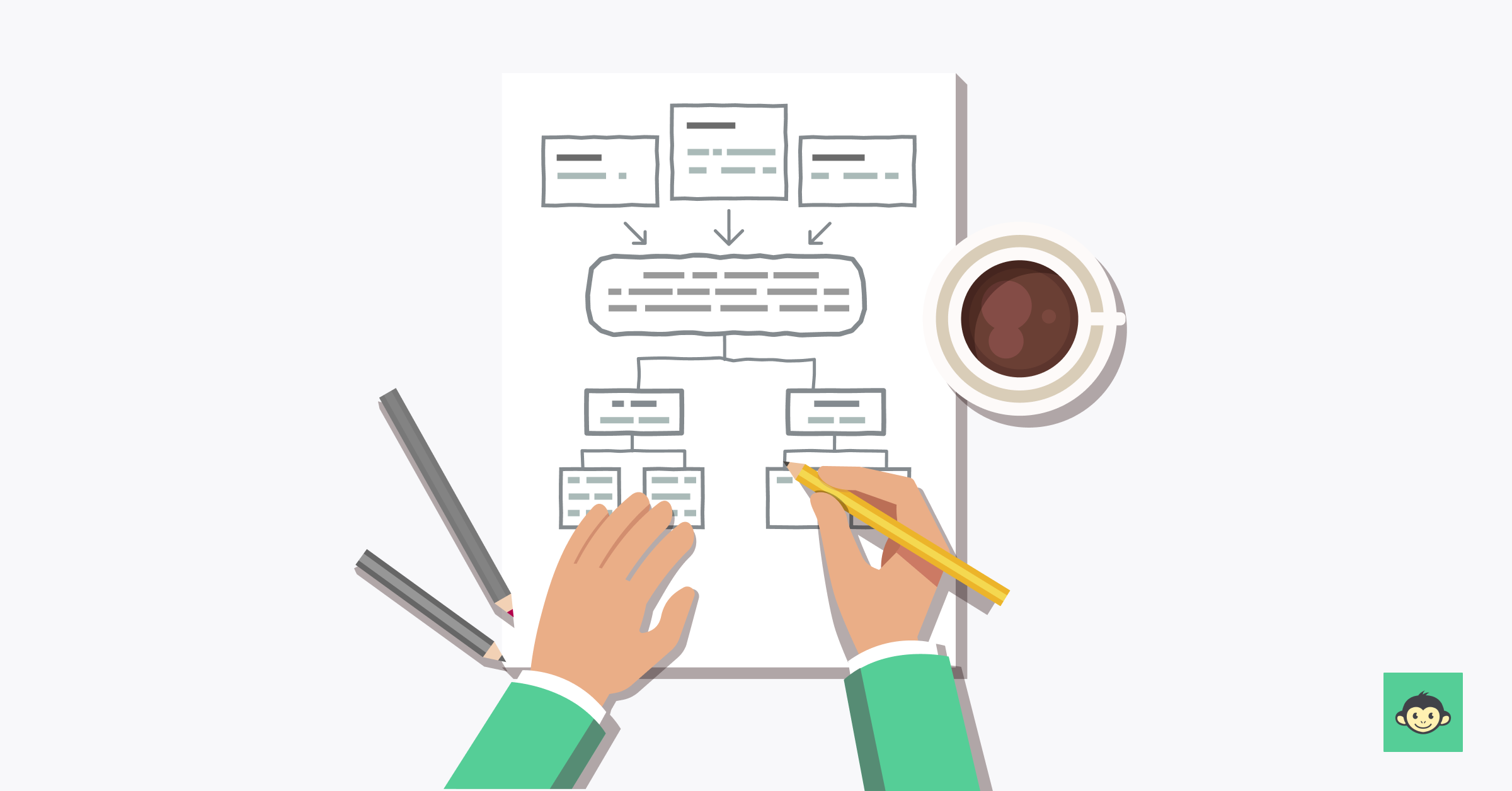Employee 1:1 template: 50+ Questions to ask them in 2024

Here's an interesting statistic - did you know that employees who have regular one-on-one meetings with their managers are three times more engaged in their work? Conducting a 1:1 meeting has become a vital tool for effective communication and fostering stronger relationships within teams.
By implementing the right practices and asking relevant questions, these meetings can greatly enhance productivity and employee satisfaction.
What is a 1:1 meeting?

A one on one meeting, also known as a one-on-one or one-to-one meeting, is a dedicated time for and private conversation between a manager and a team member or direct report in a workplace.
It provides an opportunity for both parties to exchange feedback, discuss progress, address concerns, and align on goals and expectations. These meetings offer a valuable platform for career development, constructive feedback, and setting priorities.
During one on ones, the manager and the direct reports can discuss various topics, such as the team member's career goals, day-to-day work, weekly updates, personal life, and any challenges they may be facing.
By having open and meaningful conversations, both the manager and the direct reports can gain a deeper understanding of each other's perspectives, build trust, and ensure they are on the same page leading to key results.
What is the purpose of a one-on-one meeting?

Imagine a basketball team without a coach, the team might practice together, but without personalized guidance and feedback, their progress and cohesion would suffer.
In many ways, a one on one meeting is like that coach-player interaction, a more dedicated time and space where managers and team members connect on an individual level to unlock their full potential.
With this in mind, the purpose of a one-on-one meeting extends far beyond a mere status update or a formal check-in. It serves as a crucial platform for building trust, fostering open communication, and nurturing professional growth.
These meetings provide an opportunity to address both the personal and professional aspects of an employee's journey within an organization.
By dedicating focused time to each direct report, managers can understand their unique perspectives, aspirations, and challenges to improve team culture. Through thoughtful discussions, the purpose of a one-on-one meeting encompasses several key objectives:
Alignment and clarity
Conducting a 1:1 meeting ensures that both the senior manager and members of their team are aligned on goals, priorities, and expectations. It helps everyone stay on the same page and work towards shared objectives.
Feedback and development
These meetings create a safe space for exchanging feedback. Managers can provide constructive guidance to help team members grow professionally, while team members can share their perspectives, ideas, and concerns.
Relationship building
Every 1:1 meeting can foster stronger relationships between managers and team members. By understanding individual motivations and fostering a supportive environment, these meetings can cultivate trust and engagement within the team.
Recognition and celebration
Recognizing achievements and celebrating wins is an essential part of the one-on-one meeting. Acknowledging team members' efforts and accomplishments boosts morale and motivates them to continue performing at their best.
Problem solving and support
These meetings offer an opportunity for productive managers to address challenges, exchange feedback, provide support, and brainstorm solutions together. By discussing obstacles openly, managers can assist team members in overcoming hurdles and ensuring their success.
Encouraging autonomy and empowerment
One of the key purposes of a one-on-one meeting is to empower team members by giving them the autonomy to voice their opinions, ideas, and concerns. By providing a platform for open dialogue, managers can empower employees to take ownership of their work and contribute meaningfully to the team's success.
Professional development planning
Another important aspect of one-on-one meetings is to discuss and plan for the professional development of team members. Managers can help individuals identify areas for growth, set goals, and create actionable plans to enhance their skills and advance their careers within the organization.
Enhanced team cohesion
One-on-one meetings also play a pivotal role in enhancing team cohesion. By understanding each team member’s strengths and challenges, managers can foster a more collaborative and supportive team environment. These meetings help in aligning individual goals with team objectives, thereby promoting unity and collective success.
Strategic insight and alignment
One-on-one meetings provide an opportunity for managers to gain strategic insights from their team members. Employees often have valuable insights into operational challenges and opportunities. By leveraging these perspectives, managers can make more informed strategic decisions that align with the team’s capabilities and market demands.
What is a one-to-one discussion format?

Imagine having a conversation that's all about you – your goals, your challenges, and your growth. That's the essence of a one-on-one discussion. Let's dive into what makes this format special and effective:
- Personal connection: A one-on-one discussion is like a personalized chat tailored to your needs. It's a time for you to connect with your manager or colleague on an individual level.
- Welcoming start: Usually, it begins with a warm welcome and a casual catch-up. It's a chance to chat about things outside of work, fostering a more relaxed atmosphere.
- Your agenda matters: Unlike regular meetings, here, your agenda takes precedence. It's an opportunity for you to bring up topics that matter most to you – whether it's project updates or career ambitions.
- Feedback exchange: This is your space to receive and offer feedback. It's a two-way street where you can discuss your performance and get insights on how to improve.
- Problem-solving: Got a roadblock? Use this time to discuss challenges you're facing. Brainstorm solutions together and get guidance on overcoming obstacles.
- Next steps and action items: To ensure things don't end up as just talk, you'll wrap up with action items. These are tasks you and your discussion partner commit to completing before the next meeting.
Remember, the beauty of a one-on-one discussion is that it's a safe space. It's a time to be honest, ask questions, and even bring up concerns you might not be comfortable sharing in a group setting. It's all about creating an environment where you can grow, thrive, and have your voice heard.
What does a good 1:1 look like?

A good one-on-one meeting is characterized by open and honest communication, active listening, and a focus on both professional and personal growth. Here are some key elements that contribute to a successful one-on-one:
Preparation
Both the manager and the direct report should come prepared with talking points and meeting agenda items. This demonstrates commitment and ensures that important topics are addressed.
Active listening
Active listening is crucial during a one-on-one meeting. Managers should provide their undivided attention, show genuine interest in the team member's thoughts and concerns, and seek to understand their perspective.
Goal setting
Setting goals is an integral part of a one-on-one meeting. Both the manager and the direct report should collaboratively establish SMART (Specific, Measurable, Achievable, Relevant, Time-bound) goals that align with the team member's career development and the organization's objectives.
Support and development
Managers should offer support and resources to help team members achieve their goals. This may involve providing mentorship, recommending training opportunities, or offering guidance on skill development.
Recognition and appreciation
Acknowledging and appreciating the team member's efforts and achievements is essential to employee development. Managers should take the time to celebrate wins and recognize the team member's contributions.
What are the disadvantages of one on one meetings?

One-on-one meetings, while beneficial in many ways, come with certain disadvantages that can affect their overall efficacy. Understanding these drawbacks can help in devising strategies to mitigate them. The following points outline the main disadvantages of one-on-one meetings:
- Time-consuming: One-on-one meetings require a significant investment of time from both parties. Scheduling, preparing, and conducting these meetings can consume valuable time that might otherwise be used for other productive activities. For managers with numerous direct reports, the cumulative time spent in one-on-one meetings can be substantial.
- Inefficiency for broad issues: When issues affect multiple team members, addressing them in a series of individual meetings can be inefficient. Group meetings or team discussions might be more effective in such cases, as they allow for collective brainstorming and faster dissemination of information.
- Potential for misalignment: If the agenda or objectives of one-on-one meetings are not clearly defined, they can lead to misalignment between the participants. Without a structured approach, these meetings can drift off-topic, resulting in a lack of focus and unclear outcomes.
- Dependency and micro-management: Regular one-on-one meetings can inadvertently foster a dependency on the manager for decision-making and problem-solving. This can stifle the direct report’s initiative and autonomy. Moreover, there is a risk of micro-management, where the manager becomes overly involved in minor details rather than empowering the employee.
- Emotional intensity: One-on-one settings can sometimes be emotionally intense, especially when discussing performance issues or sensitive topics. This can create stress for both parties and may inhibit open communication if either party feels uncomfortable.
- Limited perspective: One-on-one meetings provide only the perspectives of the two individuals involved. Important insights or feedback from other team members may be overlooked, leading to a narrow view of the situation at hand. Group discussions can often provide a more holistic understanding of issues.
- Risk of inequity: If one-on-one meetings are not conducted consistently and fairly across all team members, there can be perceptions of favoritism or neglect. Some employees might feel they are not receiving the same level of attention or support as their colleagues, which can affect team morale and cohesion.
How do I document one-on-one meetings with a team member?

Documenting a one-on-one meeting is essential for future reference and accountability. Here are some tips for effective documentation:
Choose a method
Select a method for documenting that works best for you and your team. This can be a shared document, a dedicated project management tool, or even a note-taking app.
Capture key points
Take meeting notes during the meeting to capture important discussions, decisions, and action items. Highlight any areas that require follow-up or further attention.
Share the document
Share the meeting agenda and notes with the member to ensure clarity and alignment. This allows both parties to review the discussed topics and reference them in future meetings.
Track progress
Regularly review past direct reports and one on one meeting notes to track progress on action items and goals. This helps to keep everyone accountable and ensures that nothing falls through the cracks.
Establish a structured template
Create a standardized template for documenting one-on-one meetings to ensure consistency and thoroughness. This template can include sections for agenda items, discussion points, action items, and follow-up notes, making it easier to organize information and track progress over time.
Encourage two-way feedback
Incorporate a section in the documentation process for both the manager and the team member to provide feedback on the meeting. Encouraging open communication allows for mutual understanding and continuous improvement.
How to structure a 1:1 meeting with a direct report?

A well-structured one-on-one meeting provides a framework for productive discussions. If you're planning on scheduling a manager's meeting, consider the following meeting structure, to make the most out of your 1:1 meeting:
Opening
Start the one-on-one meeting on a positive note. Use this time to build rapport, ask about the team member's well-being, get feedback preferences and create a comfortable atmosphere.
Agenda review
Quickly go through the agenda to set expectations and ensure alignment on the topics to be discussed. Encourage the team mate to share any additional items they would like to cover.
Progress and updates
Review the team member's progress since the previous meeting. Discuss any accomplishments, challenges, or obstacles encountered. This is an opportunity to provide feedback and guidance.
Goal and development discussion
Dive into a discussion about the team member's goals, their direct report's career goals and aspirations, and professional development. Collaboratively set new goals or refine existing ones and explore ways to support their growth.
Wrap-up and action Items
Summarize the key takeaways, action items, and next steps. Clearly define who is responsible for each task and set deadlines. This ensures accountability and progress between meetings.
Closing
End the meeting on a positive note, expressing appreciation for the team member's contributions and reiterating your support. Encourage them to reach out if they have any additional questions or concerns.
1:1 Meeting types

New hire one-on-one
As a manager, it's crucial to provide a welcoming and supportive environment for every new employee. Use this meeting template to structure a 1:1 meeting with every new team member:
- Welcome and introduction: Start by welcoming the new hire to the team. Share a bit about yourself and your role, and encourage the new hire to introduce themselves.
- Role and expectations: Discuss the new hire's role, responsibilities, and expectations. Clarify performance metrics, goals, and any immediate tasks or projects.
- Onboarding progress: Assess the new hire's progress during the onboarding process. Inquire about any challenges or areas from the past weeks where they may need additional support.
- Training and development: Discuss any training opportunities or resources available to help the new hire succeed in their role. Explore their development goals and identify areas for growth.
- Feedback and check-in: Offer feedback on the new hire's performance so far. Address any concerns or provide positive reinforcement where appropriate. Encourage the new hire to share their feedback and ask questions. Some questions are especially important to ask, like "Would you like more or less direction from me? Do I give you enough feedback? Do you have a reasonable amount of free time to work with?"
- Future goals and expectations: Set expectations for each new employee in the upcoming weeks and months. Discuss long-term professional goals and career aspirations, and outline a plan to support their growth and development within the organization.
Weekly one on one meeting
Weekly meetings are a valuable opportunity to touch base with your team members on a regular basis. Use this one on one meeting template to structure your weekly meetings:
- Check-in: Begin the meeting by asking how the direct report is doing and if there are any pressing matters they'd like to discuss.
- Progress update: Review the team member's progress on ongoing projects and tasks since the last meeting; Ideally this should include updates from the past week. Address any challenges they may be facing and offer guidance or resources to help overcome them.
- Goals and priorities: Discuss the team member's current goals and priorities for the week. Align on what they need to focus on and ensure they have a clear understanding of their responsibilities.
- Feedback and recognition: Give feedback on the team member's recent team performance, highlighting their strengths and areas for improvement. Recognize their accomplishments and express appreciation for their efforts.
- Development and support: Discuss the team member's professional development goals and identify opportunities for growth. Offer guidance, share feedback, suggest resources or training, and provide support to help them succeed.
- Action items and next steps: Summarize the key discussion points and establish actionable steps for both the manager and the team members to take before the next meeting. Clarify deadlines and responsibilities. During the week, check your 1:1 next meeting agenda template periodically, so you always know what you'll discuss during your next meeting, a week ahead.
Monthly one-on-one meeting
Monthly one-on-ones provide a broader perspective and allow for deeper discussions. Use this meeting template to structure your one-on-one meeting templates and monthly one on one meetings:
- Reflection and review: Begin by reflecting on the team member's achievements and challenges over the past month. Celebrate wins and address any obstacles or areas that need improvement.
- Career development: Explore the team member's long-term career goals and aspirations. Discuss their progress toward those professional goals and brainstorm ways to further their professional development.
- Feedback and growth: Provide constructive feedback on the team member's performance, focusing on specific areas of improvement. Encourage them to share their own feedback and thoughts on their performance reviews and how they can enhance their skills.
- Project updates and priorities: Review the status of ongoing projects and tasks. Identify any adjustments needed in priorities, deadlines, or resources. Ensure alignment between the team member's work and organizational objectives.
- Challenges and support: Discuss any challenges or concerns the direct report is currently facing. Offer support, guidance, and resources to help overcome obstacles and achieve success.
Remote one-on-one meeting
One on ones can take place outside the conventional conference room now too. can When conducting one-on-one catchups with remote team members, it's important to adapt your approach to the virtual environment. Use this meeting template to structure your remote meetings:
- Check-in and connection: Begin the meeting by checking in with the direct report on a personal level. Ask about their well-being and any challenges they may be facing due to remote work.
- Work and progress update: Discuss the team member's current projects, tasks, and progress since the last meeting. Address any roadblocks they may be experiencing and offer support or resources to overcome them.
- Communication and collaboration: Explore the team member's experience with remote communication and collaboration tools. Identify any areas where they may need assistance or additional training to enhance their remote work effectiveness.
- Feedback and recognition: Give feedback on the team member's performance, acknowledging their accomplishments and offering suggestions for improvement. Recognize their efforts and contributions to the team's success.
- Remote work challenges: Discuss any specific challenges related to remote work, such as maintaining work-life balance or staying motivated. Brainstorm solutions and share best practices to help them navigate these challenges effectively.
- Goal setting and alignment: Collaboratively set goals and priorities for the upcoming weeks. Ensure that the direct report understands how their work aligns with the team and organizational objectives. Discuss any adjustments needed in their focus or responsibilities.
Skip level one-on-one meeting
Skip level meeting catchups provide an opportunity for managers to connect with direct reports who report to their direct reports. Use this template to structure your skip level one-on-one meetings:
- Introduction and relationship building: Begin the first meeting by introducing yourself and expressing your interest in getting to know the direct report better. Establish a comfortable and open environment for discussion.
- Feedback and perspective: Encourage the direct report to share their thoughts on their current role, projects, and challenges. Seek their perspective on the team dynamics, communication, and any areas where improvements can be made.
- Career development and professional goals: Discuss the team member's career aspirations and professional goals. Explore ways to support their professional growth and advancement within the organization. Provide guidance and resources as needed.
- Support and obstacles: Inquire about any obstacles the direct report may be facing and offer support in overcoming them. Address any concerns or questions they may have regarding their work or the team culture or dynamics.
- Feedback and recognition: Give feedback on the team member's performance and contributions, highlighting their strengths and areas for further development. Recognize their achievements and offer encouragement.
- Action items and follow-up: Summarize the meeting agendas key discussion points and establish action items for both yourself and the team mate. Clearly communicate any next steps or decisions to be made. Follow up on agreed-upon actions in subsequent meetings.
New project kick-off one-on-one meeting
When starting a new project, it's crucial to align with your team members to ensure a successful launch. Utilize this meeting template to structure your project kick-off one-on-one meetings:
- Project overview: Begin by providing a comprehensive overview of the new project. Explain its goals, scope, and importance within the organization. Encourage your team members to ask questions for clarification.
- Roles and responsibilities: Discuss the roles and responsibilities of each team member within the project. Clarify expectations and how their contributions will impact the project's success.
- Timeline and milestones: Outline the project timeline and key milestones. Ensure your team member understands the project's deadlines and the importance of meeting them for overall success.
- Resources and support: Discuss the resources available to support the project, including tools, budget, and other team members' expertise. Address any potential challenges and how they can be overcome.
- Feedback and ideas: Encourage your team member to share their ideas, suggestions, and concerns about the project. Foster an environment where open communication leads to innovative solutions.
- Progress and adjustments: During subsequent meetings, review the project's progress, identifying any adjustments needed. Address any obstacles and explore solutions collaboratively to ensure the project stays on track.
Performance Improvement one-on-one meeting
Continuous improvement is essential for personal and professional growth. Use this meeting template to structure performance improvement one-on-one meetings:
- Self-assessment: Begin by asking the team member to reflect on their own performance. What areas do they believe are strengths, and where do they see room for improvement?
- Performance review: Share your assessment of their performance, highlighting their accomplishments and areas that could use improvement. Keep the tone constructive and supportive.
- Skill enhancement: Discuss the specific skills required for the role and identify areas where additional development could lead to better performance. Collaborate on a plan to enhance these skills.
- Goal setting: Set performance improvement goals together, making them specific, measurable, achievable, relevant, and time-bound (SMART). These goals should target the areas identified for improvement.
- Learning opportunities: Explore training, workshops, or resources that could help the team member acquire the necessary skills. Discuss how these opportunities align with their career trajectory.
- Progress tracking: Regularly monitor the team member's progress toward their performance improvement goals. Provide feedback and acknowledge milestones achieved along the way.
Conflict resolution one-on-one meeting
Addressing conflicts promptly is vital for maintaining a healthy work environment. Use this meeting template to structure conflict resolution one-on-one meetings:
- Open dialogue: Create a safe space for open conversation. Begin by acknowledging the conflict and expressing your commitment to resolving it together.
- Listening and understanding: Allow the team member to express their perspective on the conflict. Listen actively, without interruption, and ask clarifying questions to fully understand their point of view.
- Identifying common ground: Identify areas of agreement or shared goals between both parties. This can help establish a foundation for finding common solutions.
- Brainstorming solutions: Collaborate on potential solutions to the conflict. Encourage creative thinking and explore options that are mutually beneficial.
- Agreeing on a solution: Select a solution that addresses the concerns of both parties. Make sure both individuals are comfortable with the proposed resolution and committed to implementing it.
- Follow-up and check-in: Schedule a follow-up meeting to evaluate the effectiveness of the chosen solution. Ensure that the conflict has been fully resolved and discuss any adjustments if needed.
Remember, skip level meetings should foster open communication and demonstrate your genuine interest in the team member's success. Use this opportunity to gain insights into their experiences and perspectives while building a trusting relationship.
1:1 Meeting best practices

When it comes to 1:1 meetings, incorporating best practices can significantly enhance their effectiveness. Here are some comparisons that highlight these practices:
- Regular as clockwork: Just as a well-maintained clock ensures accuracy and reliability, scheduling regular 1:1 meetings demonstrates your commitment to consistent communication with your direct reports. Set a more recurring meeting cadence to provide stability and create a sense of trust and dependability.
- Open the floodgates: Imagine a dam that restricts the flow of water. In 1:1 meetings, open the floodgates of communication by creating a safe space for open and honest dialogue. Encourage direct reports to share their thoughts, concerns, and ideas freely, fostering a culture of transparency and trust.
- Gardening for growth: Similar to tending to a garden, 1:1 meetings offer an opportunity to nurture the growth and development of your direct reports. Provide guidance, resources, and useful feedback to help them blossom and reach their full potential.
- Unleash the butterfly effect: The butterfly effect suggests that small changes can have a significant impact over time. Similarly, small gestures and acts of recognition in 1:1 meetings can create a ripple effect, boosting morale, motivation, and engagement within your team.
- Beyond the surface: Just as an iceberg's true magnitude lies beneath the surface, delve deeper in your 1:1 meetings to uncover underlying challenges, motivations, and aspirations of your direct reports. Go beyond task and status updates, to explore their personal and professional well-being, offering support and guidance where needed.
- A recipe for success: Consider one on one meeting templates as a recipe for success rather than a rigid script. Just as a skilled chef adjusts the ingredients and flavors to create a delicious dish, adapt the meeting format, questions, and topics to suit the individual team member and their specific needs.
Remember, these best practices provide a foundation for meaningful and productive 1:1 meetings. Embrace them, and watch as your direct reports flourish and your relationships strengthen.
How to schedule one-to-one meetings?

Scheduling one-on-one meetings might seem like a logistical puzzle, but with a dash of strategy and a sprinkle of flexibility, it's entirely manageable. Here's how to master the art of scheduling these personalized sessions:
- Shared calendar invite magic: Embrace the wonders of shared calendars like Google Calendar or Microsoft Outlook. They're lifesavers when it comes to finding common time slots.
- Set a cadence: Determine the frequency of your one-on-one meetings. Whether it's weekly, bi-weekly, or monthly, consistency is key.
- Preferred times: Understand each individual's preferred meeting times. Some are early birds, while others thrive later in the day.
- Time zones matter: If you're working with remote team members across different time zones, be mindful of their local times when scheduling.
- Blocking off time: Reserve specific slots in your calendar for one-on-one meetings. This minimizes conflicts and shows your commitment to these interactions.
- Flexibility first: Acknowledge that unexpected urgencies might pop up. Be ready to shuffle schedules when needed.
- Booking buffer: Keep a short buffer between meetings. This prevents the stress of running late and allows time for wrap-up and note-taking.
- Pre-meeting prep: Share the agenda ahead of time, so everyone comes prepared. This ensures your meetings are productive and focused.
- Rescheduling grace: Life can be unpredictable. If a meeting needs to be rescheduled, approach it with understanding, and find a new time that works.
One-on-one meeting template

Crafted with thought-provoking questions, here are 5 templates to ensure every interaction is purposeful and engaging.
First one-on-one meeting template
- How's your experience been since joining the team?
- Could you share a bit about your background and what led you here?
- What do you hope to achieve in your role here?
- Are there any immediate challenges you've encountered or need assistance with?
- How do you prefer to receive feedback – more guidance or more autonomy?
- Is there a specific area you're eager to contribute your skills to?
- What are some career goals you have in mind for the next year or two?
- What types of projects or tasks are you most excited about working on?
- Is there any specific training or resources you believe would help you excel in your role?
- How do you like to manage your workload and stay organized?
- What's your preferred mode of communication for quick updates or clarifications?
- Can you share any insights on your preferred working style and collaboration preferences?
- Do you have any questions or concerns about your role, team, or the company as a whole?
Weekly one-on-one meeting template
- What progress have you made on your ongoing projects since our last meeting?
- Are there any roadblocks or challenges you're currently facing that I can help with?
- Have your priorities shifted for the upcoming week? What tasks will you be focusing on?
- Is there any feedback or suggestions you'd like to share about our team's dynamics or processes?
- Are there any accomplishments or wins from the past week that you'd like to highlight?
- Are you finding the resources and support you need to complete your tasks effectively?
- Have you identified any areas where additional training or skill development could be beneficial?
- How are you managing your work-life balance, especially in a busy week?
- Can you provide an update on any collaborative projects you're involved in with other team members?
- Are there any upcoming deadlines or milestones we should be aware of?
- What's your preferred way of receiving recognition for your achievements?
- Are there any tools or technologies you feel would enhance your productivity?
- Do you have any suggestions for improving the efficiency of our team meetings or communication?
Monthly one-on-one meeting template
- Looking back over the past month, what accomplishments are you particularly proud of?
- Have there been any significant challenges or learning experiences that stood out to you?
- How are you progressing toward your long-term career goals and aspirations?
- Can you provide updates on any projects or initiatives you've been working on that have a broader impact?
- What additional support or resources would help you further develop your skills and knowledge?
- Are there any changes in your professional interests or areas of focus that you'd like to explore?
- Have you had a chance to apply any feedback you received from previous discussions?
- How would you evaluate your overall performance this month and any specific areas of growth?
- Have there been any changes in your work environment or workflow that we should address?
- Are there any insights you've gained about the team's dynamics or collaboration that you'd like to share?
- What do you consider the most significant lesson you've learned during this month?
- Is there anything you'd like to see more or less of in terms of team communication or updates?
- Do you have any suggestions for enhancing team cohesion or promoting cross-functional collaboration?
Remote one-on-one meeting template
- How are you adjusting to remote work, and is there anything you need to make the experience smoother?
- Can you share any specific challenges or opportunities you've encountered while working remotely?
- What progress have you made on your tasks or projects since our last virtual meeting?
- Are there any communication tools or technologies that you find particularly helpful or challenging?
- How do you maintain a work-life balance while working remotely, and do you need any support in this area?
- Are there any specific accomplishments or contributions you'd like to share from your remote work experience?
- Have you found any effective strategies for staying motivated and productive in a remote setting?
- Can you provide updates on any virtual collaborations or cross-team projects you're involved in?
- Is there any feedback you'd like to provide on the remote communication and collaboration processes we use?
- Have you explored any online training or resources to enhance your remote work effectiveness?
- Are there any aspects of remote work that you find more challenging or less challenging than initially expected?
- Have you been able to maintain a sense of connection with your colleagues while working remotely?
- What suggestions do you have for improving our remote work practices and ensuring a supportive virtual work environment?
Skip level one-on-one meeting template
- How would you describe your experience working within our team and the overall company culture?
- Are there any specific challenges or opportunities you believe we should be addressing at a higher level?
- What do you feel are the key strengths of your direct team and areas where improvements could be made?
- Can you provide insights into your career goals and aspirations within the organization?
- What feedback or suggestions do you have about the communication and collaboration between different teams?
- Are there any projects or initiatives you're involved in that you'd like to share with a broader perspective?
- How do you see your role contributing to the larger company objectives and goals?
- What support or resources would you find beneficial to further develop your skills and career trajectory?
- Are there any cross-functional opportunities you've identified that could enhance our team's performance?
- Can you share any observations about the team dynamics, communication patterns, or work processes?
- What's your perspective on the alignment between the team's work and the company's mission and vision?
- How do you see your role impacting the overall success and growth of the organization?
- Are there any innovative ideas or strategies you believe could positively impact our team's effectiveness or efficiency?
Conclusion
Implementing a well-structured 1:1 meeting template with best practices and relevant questions can significantly enhance communication, foster solid relationships, and drive individual and team growth.
By adhering to meeting agenda templates with a consistent cadence, creating a safe and open environment, and tailoring the meetings to individual needs, managers can effectively support their teammates' professional development, address challenges, and align on goals.
Additionally, incorporating relevant questions encourages meaningful dialogue, deepens understanding, and promotes mutual accountability. Ultimately, embracing these best practices empowers managers to build trust, boost engagement, and cultivate a positive and productive work culture.
Take your team culture to new heights with CultureMonkey! Our comprehensive employee engagement platform includes every kind of customizable one on one meeting template, packed with engaging talking points.
Seamlessly align career goals, discuss top priorities, and set professional goals right from the first meeting. Create a custom meeting agenda template and more. Elevate your team's performance and create a thriving work environment with your company's own templates.
Build solid conversations and great conversations. Get started with Culture Monkey today and improve team culture!
FAQs
1. How often should 1:1 meetings be conducted?
The frequency of one-on-one meetings can vary based on team dynamics and goals. Typically, conducting them on a weekly or bi-weekly basis is effective. Regular interactions foster better understanding, allow for prompt addressing of challenges, and build stronger relationships between managers and team members. These consistent meetings ensure ongoing alignment and continuous support, ultimately enhancing team performance and morale.
2. What should be the focus of a 1:1 meeting?
The primary focus of a 1:1 meeting should be the individual team member's needs and growth. It's an opportunity to discuss their progress, address concerns, provide feedback, and align on goals. These meetings are also a chance to foster open dialogue, promote collaboration, and ensure that team members feel valued and supported.
3. What are some effective questions to ask during a 1:1 meeting?
Effective questions for a 1:1 meeting include those that delve into the team member's goals, challenges, and suggestions. Examples are: "What accomplishments are you proud of?", "Is there any support you need to achieve your goals?", and "How can we enhance team communication?" These questions encourage deeper conversations and help tailor the meeting to the individual's needs.
4. How can managers encourage open and honest communication in a 1:1 meeting?
To encourage open communication, managers should create a safe and non-judgmental environment. Actively listen without interrupting, ask open-ended questions, and express genuine interest in the team member's thoughts. Sharing personal experiences and showing vulnerability can also help in building trust. Regularly acknowledging feedback and taking action based on it reinforces the idea that their input matters.
5. How can I prepare for an upcoming quarter in terms of employee's meetings?
As you prepare for the upcoming quarter, plan your employee meetings by setting clear objectives and topics for well rounded discussion. Review past performance and goals, outline new projects, and align on expectations. Schedule regular one-on-one meetings to track progress, provide feedback, and address challenges. Incorporate development discussions and ensure a supportive atmosphere that encourages open dialogue and goal alignment.
6. What should be included in a one-on-one meeting template?
A one-on-one meeting template should include a warm welcome, discussion of recent accomplishments and challenges, goal progress updates, opportunities for growth and skill development, feedback exchange, and action item summaries. It's essential to create a structure that fosters meaningful conversations, promotes trust, and focuses on the individual team member's needs and aspirations.
7. How to make remote one-on-one meetings effective with a template?
To make remote one-on-one meetings effective, use a template that incorporates remote-specific aspects. Begin with a personal check-in, discuss remote work challenges, address communication tools and processes, and ensure mutual understanding of goals. Share screens for visual aid and utilize virtual whiteboards for brainstorming. Clarify action items, deadlines, and follow-up steps to maintain accountability.



